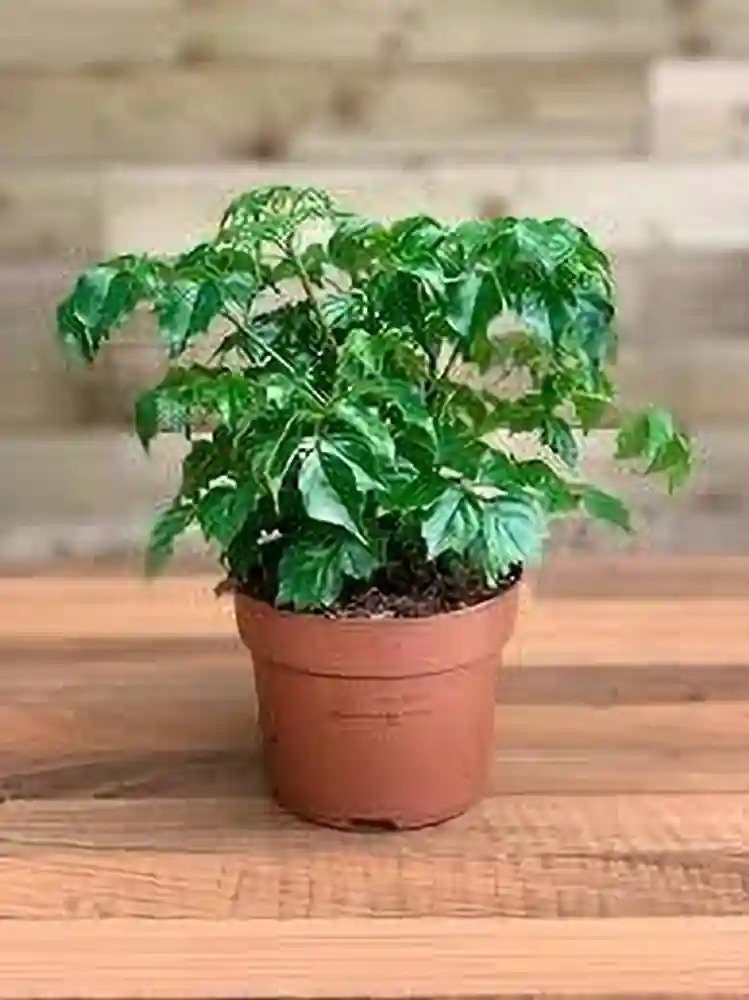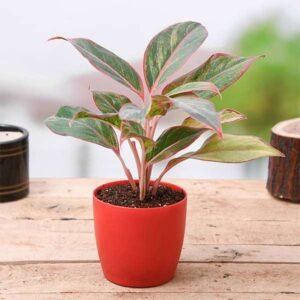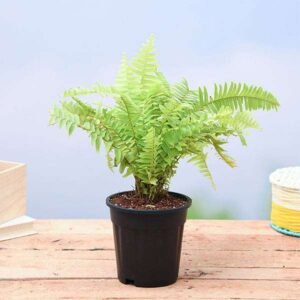Description
Red Machera Plant
The Red Machera plant, also known as Machera red plant (a common name possibly referring to a variant of ornamental tropical foliage), is an eye-catching and vibrant plant known for its brilliant red-hued foliage. Often found in gardens, landscapes, and as a houseplant, it is prized for its aesthetic appeal and ease of care. While there is some ambiguity in its scientific classification—since “Machera” is not a widely recognized genus in botanical literature—it is often associated with plants like Cordyline fruticosa (commonly called Ti plant or Hawaiian Ti), Coleus, or other colorful tropical plants.
Let’s explore this stunning plant in depth.
Botanical Profile
- Common Name: Red Machera Plant
- Possible Scientific Names: Cordyline fruticosa, Coleus scutellarioides, or similar ornamental plants
- Family: Asparagaceae (if Cordyline) or Lamiaceae (if Coleus)
- Plant Type: Perennial, Shrub, or Herbaceous (depending on variety)
- Origin: Tropical regions of Asia and the Pacific Islands
Physical Characteristics
The Red Machera plant is easily recognized by its striking red foliage, which may range from bright crimson to deep maroon, sometimes with pink, purple, or green streaks. The leaves are typically lance-shaped or oval, with a smooth texture and glossy finish, giving the plant a lush, vibrant appearance. The size of the plant varies depending on species and growing conditions—some can grow up to 3-5 feet tall, while others remain compact and bushy.
The foliage grows in a rosette form or along upright stems. Some variants may produce small flowers, usually pink or white, although the flowers are not the primary ornamental feature.
Growing Conditions
1. Light Requirements:
The Red Machera plant thrives in bright, indirect sunlight. Too much direct sunlight can cause the leaves to scorch, while too little light can reduce the vibrancy of its color. If grown indoors, place it near a window with filtered light. Outdoors, partial shade is ideal.
2. Soil:
Well-drained, fertile soil with good organic content is best. A slightly acidic to neutral pH (around 6.0–7.0) is generally preferred.
3. Watering:
Consistent moisture is important. Water the plant regularly to keep the soil slightly damp but not waterlogged. Overwatering can lead to root rot. During the growing season (spring and summer), more frequent watering may be needed. Reduce watering in winter.
4. Temperature & Humidity:
As a tropical plant, Red Machera loves warm temperatures between 60°F and 85°F (15°C–29°C). It is not frost-tolerant. High humidity enhances leaf color and health. If kept indoors, using a humidifier or placing the plant on a humidity tray can be beneficial.
5. Fertilization:
Feed with a balanced, water-soluble fertilizer every 4-6 weeks during the growing season to maintain vigorous growth and vibrant leaf color. Avoid over-fertilizing, as this can damage the roots or alter foliage color.
Propagation
Propagation is typically done through stem cuttings. Cut a healthy stem just below a node and place it in water or moist soil. In a few weeks, roots will develop. This method is easy and allows gardeners to clone their favorite varieties.
Uses and Benefits
1. Ornamental Use:
The Red Machera plant is widely used in landscaping and interior decoration due to its bright colors and dramatic foliage. It adds a tropical flair to:
- Gardens and borders
- Patio containers
- Living rooms and indoor plant corners
- Hotel lobbies or office spaces
2. Feng Shui and Spiritual Significance:
In many cultures, especially in Southeast Asia and Polynesia, similar plants like Cordyline are considered symbols of good luck and protection. Red plants are often planted at entrances or in sacred spaces to ward off evil spirits and invite prosperity.
3. Air Purification:
Like many tropical plants, the Red Machera may also contribute to air purification by absorbing toxins and releasing oxygen, making it a healthy choice for indoor environments.
Maintenance and Pruning
Red Machera is relatively low-maintenance. Remove any yellowing or damaged leaves regularly to encourage new growth. Occasional pruning helps maintain its shape and encourages bushier growth. If the plant becomes leggy, cutting back the stems can rejuvenate it.
Pests and Problems
While generally hardy, Red Machera plants can occasionally face issues like:
- Spider mites or aphids: These pests can be controlled with neem oil or insecticidal soap.
- Root rot: Caused by overwatering or poor drainage.
- Leaf spot or fungal diseases: Ensure proper air circulation and avoid overhead watering.
If the leaves begin to lose their vibrant color, this could be due to insufficient light, lack of nutrients, or age. Adjusting care usually restores the plant’s brilliance.
Varieties and Similar Plants
While “Red Machera” may refer to several ornamental types, here are a few similar and commonly confused varieties:
- Cordyline fruticosa ‘Red Sister’ – Popular for its pinkish-red, sword-like leaves.
- Coleus blumei hybrids – Known for multicolored foliage with red, burgundy, and green patterns.
- Caladium ‘Red Flash’ – A heart-shaped leaf plant with striking red veins.
- Croton (Codiaeum variegatum) – Another vibrant foliage plant often mistaken for Red Machera.
Each has its unique leaf shape, growth habit, and color intensity but shares the same appeal: bold, beautiful color for ornamental display.
Symbolism and Cultural Importance
In various Asian and Polynesian cultures, plants with red leaves are thought to bring protection, vitality, and luck. They are often planted near homes, temples, or used in rituals. The Red Machera, with its vivid appearance, is often included in traditional ceremonies or festive decorations, symbolizing strength, energy, and life force.
Indoor vs. Outdoor Growth
The Red Machera is versatile:
- Indoors: It enhances decor and mood, suits modern aesthetics, and thrives in containers.
- Outdoors: In tropical or subtropical climates, it flourishes in gardens, borders, or mass plantings.
However, in colder zones, it should be brought indoors or treated as an annual.
Conclusion
The Red Machera plant is a true showstopper in any setting. With its vibrant foliage, tropical charm, and relatively simple care requirements, it is a favorite among plant lovers. Whether gracing a sunny corner of your home or brightening a shaded garden path, the Red Machera offers a touch of exotic beauty and symbolic richness.







Reviews
There are no reviews yet.